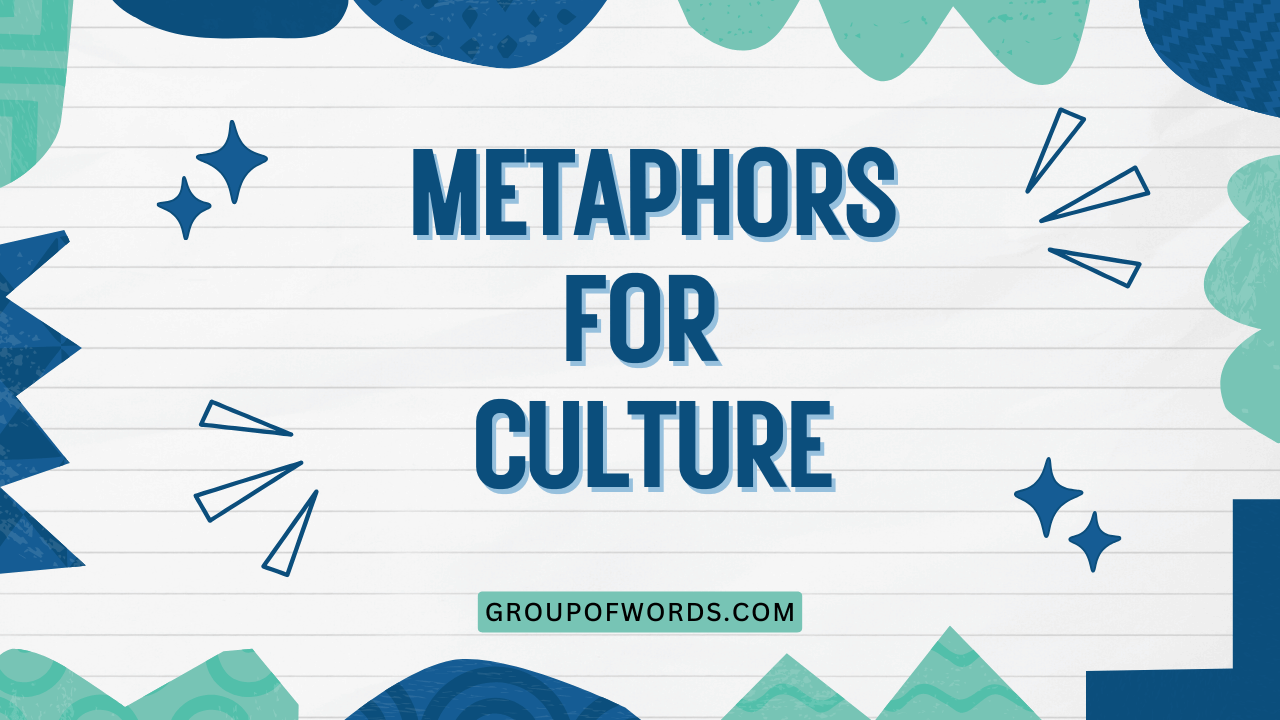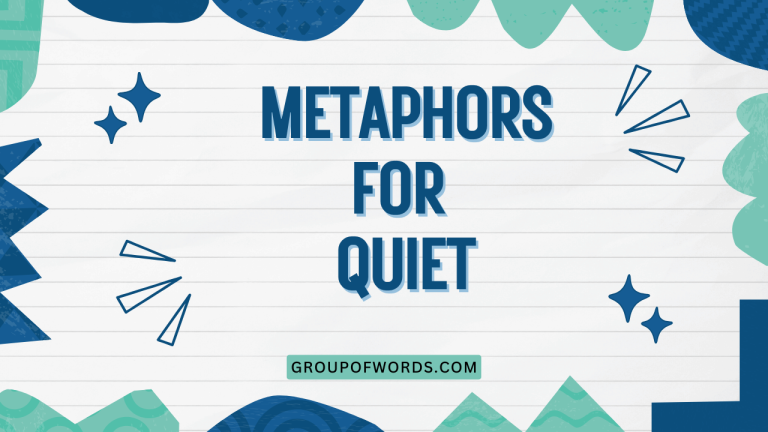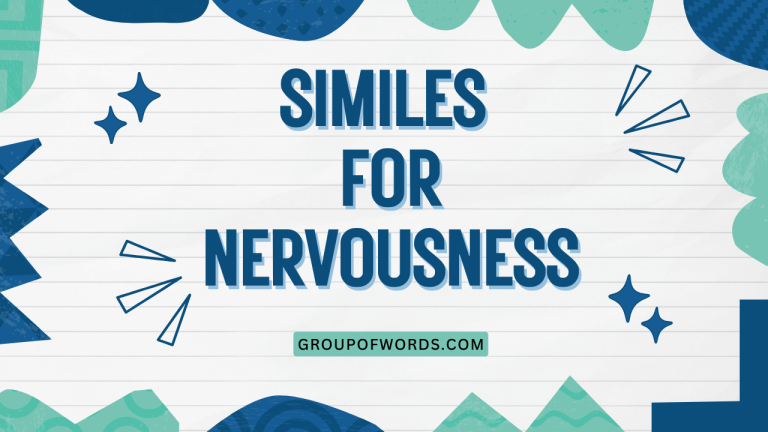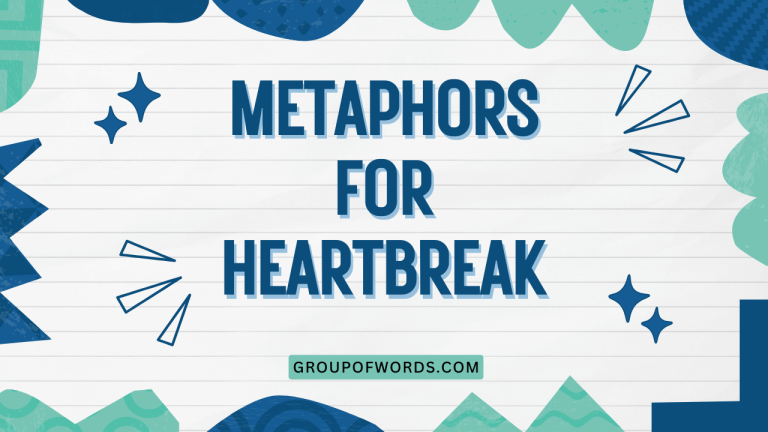Culture as Metaphor: Understanding Society Through Language
Understanding culture can be a complex endeavor, as it encompasses a vast array of shared values, beliefs, behaviors, and artifacts within a group of people. One powerful tool for grasping this complexity is the use of metaphors.
Metaphors allow us to understand abstract concepts like culture by relating them to more concrete, familiar ideas. This article explores various metaphors used to describe culture, examining their meanings, implications, and how they enhance our understanding of social dynamics.
This exploration is beneficial for students of sociology, anthropology, linguistics, and anyone interested in intercultural communication.
By delving into these metaphors, we gain a richer perspective on the multifaceted nature of culture and its influence on our lives. This article provides a comprehensive guide to grasping these metaphors, complete with examples, usage rules, and practical exercises to solidify your understanding.
Whether you’re a student, a researcher, or simply curious about the world around you, this guide will equip you with the tools to analyze and appreciate the diverse tapestry of human cultures.
Table of Contents
- Introduction
- Defining Culture Through Metaphors
- Structural Breakdown of Cultural Metaphors
- Types of Cultural Metaphors
- Examples of Cultural Metaphors in Use
- Usage Rules and Considerations
- Common Mistakes When Interpreting Cultural Metaphors
- Practice Exercises
- Advanced Topics in Cultural Metaphors
- Frequently Asked Questions
- Conclusion
Defining Culture Through Metaphors
A metaphor is a figure of speech that describes an object or idea by comparing it to something else that is not literally applicable. When applied to culture, metaphors offer a simplified, yet insightful, way to understand its complex nature.
They provide a framework for thinking about culture by drawing parallels to tangible or relatable concepts. The function of cultural metaphors is to illuminate the often-invisible aspects of culture, making them more accessible for analysis and discussion.
These metaphors can be used in academic research, intercultural training, and everyday conversations to foster a deeper understanding of cultural differences and similarities. They help us see culture not as a monolithic entity, but as a dynamic and multifaceted phenomenon.
Metaphors for culture are invaluable tools for exploring and explaining the concept of culture, which is inherently abstract and difficult to grasp. They help bridge the gap between theoretical understanding and practical application, fostering empathy and promoting effective intercultural communication.
By using metaphors, we can avoid overly simplistic or stereotypical views of culture and appreciate its complexity and nuance.
Structural Breakdown of Cultural Metaphors
Understanding the structure of a cultural metaphor involves identifying the source domain (the concept used for comparison) and the target domain (the culture being described). The metaphor works by mapping characteristics from the source domain onto the target domain. For example, in the metaphor “Culture is an iceberg,” the iceberg is the source domain, and culture is the target domain. The visible tip of the iceberg represents the aspects of culture that are easily observable (e.g., clothing, food), while the much larger, submerged portion represents the hidden, underlying values and beliefs. The effectiveness of a metaphor depends on how well the source domain captures relevant aspects of the target domain.
The structure also includes the implications of the metaphor. Every metaphor carries with it certain assumptions and limitations. Recognizing these implications is crucial for avoiding misinterpretations. For instance, the “melting pot” metaphor implies that cultures blend together, potentially overlooking the persistence of distinct cultural identities. A thorough analysis of a cultural metaphor should consider both its strengths and its weaknesses.
Types of Cultural Metaphors
Culture as an Iceberg
The “culture as an iceberg” metaphor is one of the most widely used and recognized. It suggests that only a small portion of culture is visible, while the vast majority lies hidden beneath the surface.
The visible aspects include things like customs, clothing, language, and food. The hidden aspects encompass values, beliefs, assumptions, and perceptions, which are often unconscious and deeply ingrained.
This metaphor highlights the importance of understanding the underlying values and beliefs that shape behavior. It emphasizes that surface-level observations can be misleading and that a deeper understanding requires exploring the hidden dimensions of culture.
The iceberg metaphor encourages us to look beyond what is immediately apparent and to delve into the unspoken rules and assumptions that guide behavior.
Culture as an Onion
The “culture as an onion” metaphor represents culture as having multiple layers, each layer representing different levels of cultural understanding. The outer layers might represent observable behaviors and practices, while the inner layers represent core values and beliefs.
To understand a culture fully, one must peel back these layers, moving from the superficial to the profound.
This metaphor suggests that understanding culture is a process of gradual discovery. It implies that initial interactions may only reveal the outer layers, and that deeper engagement is needed to uncover the underlying values and beliefs.
The “onion” metaphor emphasizes the complexity of culture and the need for patience and persistence in intercultural learning.
Culture as Software
The “culture as software” metaphor compares culture to a computer program that dictates how people behave and interact. Just as software provides instructions for a computer, culture provides a set of rules and guidelines for social behavior.
These rules are learned through socialization and become ingrained in our thinking and behavior.
This metaphor highlights the idea that culture is a learned system of knowledge. It emphasizes the role of socialization in shaping our behavior and the influence of cultural norms on our perceptions and actions.
The “software” metaphor can be useful for understanding how culture influences everything from communication styles to decision-making processes.
Culture as a Lens
The “culture as a lens” metaphor suggests that culture shapes how we perceive and interpret the world. Just as a lens filters light, culture filters our experiences, influencing what we see and how we understand it.
Our cultural background provides a framework for making sense of the world around us.
This metaphor emphasizes the subjective nature of perception. It highlights the idea that our cultural background influences our interpretations and that different cultures may see the world in different ways.
The “lens” metaphor is useful for understanding cultural differences in communication styles, values, and beliefs.
Culture as a Garden
The “culture as a garden” metaphor views culture as something that needs to be cultivated and nurtured. Just as a gardener tends to plants, members of a culture work to preserve and promote their traditions, values, and beliefs.
This metaphor emphasizes the importance of cultural maintenance and the role of individuals in shaping the future of their culture.
This metaphor highlights the dynamic nature of culture. It suggests that culture is not static but rather evolves over time through the actions of its members.
The “garden” metaphor emphasizes the need for both preservation and innovation in cultural development.
Culture as a Melting Pot
The “culture as a melting pot” metaphor describes a society where different cultures blend together to create a new, hybrid culture. This metaphor suggests that immigrants and minority groups assimilate into the dominant culture, losing their original cultural identities in the process.
The result is a homogeneous society with a shared set of values and beliefs.
While this metaphor has been influential, it has also been criticized for overlooking the persistence of distinct cultural identities and the potential for cultural conflict. It can also minimize the contributions of minority cultures to the overall society.
The “melting pot” metaphor is often contrasted with the “tapestry” or “mosaic” metaphor, which emphasizes cultural diversity and the preservation of distinct cultural identities.
Culture as a Tapestry or Mosaic
The “culture as a tapestry” or “culture as a mosaic” metaphor portrays society as a collection of distinct cultures that coexist and contribute to the overall richness of the society. Each culture retains its unique identity while also being part of a larger whole.
This metaphor emphasizes cultural diversity and the value of preserving distinct cultural traditions.
This metaphor recognizes that cultural differences can be a source of strength and innovation. It encourages intercultural understanding and respect for diverse perspectives.
The “tapestry” or “mosaic” metaphor is often seen as a more accurate and inclusive representation of multicultural societies than the “melting pot” metaphor.
Culture as a River
The “culture as a river” metaphor suggests that culture is constantly flowing and changing, influenced by various tributaries and currents. This metaphor emphasizes the dynamic and fluid nature of culture, highlighting its ability to adapt and evolve over time.
Just as a river is shaped by its environment, culture is shaped by historical events, social interactions, and technological advancements.
This metaphor highlights the importance of understanding the historical context of a culture. It suggests that culture is not static but rather a product of ongoing processes of change and adaptation.
The “river” metaphor can be useful for understanding cultural shifts and the emergence of new cultural forms.
Examples of Cultural Metaphors in Use
The following tables provide examples of how these cultural metaphors are used in various contexts. Each table focuses on a specific metaphor and illustrates its application with multiple examples.
These examples span diverse situations, demonstrating the versatility and relevance of cultural metaphors in understanding and interpreting social phenomena.
The first table focuses on the “Culture as an Iceberg” metaphor. It provides examples of how this metaphor is used to explain the visible and hidden aspects of different cultures, emphasizing the importance of understanding the underlying values and beliefs.
| Example | Explanation |
|---|---|
| Observing a Japanese tea ceremony (visible) reveals respect for tradition, but understanding the underlying emphasis on harmony and mindfulness (hidden) provides deeper insight. | The tea ceremony is the visible tip, while the values of harmony and mindfulness are the submerged part of the iceberg. |
| American informality in greetings (visible) contrasts with the deeper value of individualism and direct communication (hidden). | Casual greetings are easily observed, but the underlying cultural emphasis on individualism is less apparent. |
| Italian cuisine’s regional variations (visible) reflect a deep-seated pride in local traditions and family heritage (hidden). | Different regional dishes are the visible part, while the pride in local traditions is the hidden part. |
| The public displays of affection common in some cultures (visible) may stem from a more collectivist sense of community and shared emotions (hidden). | Visible affection is the tip, while the collectivist sense of community is the submerged portion. |
| The emphasis on punctuality in German culture (visible) reflects a deeper value of order, efficiency, and respect for others’ time (hidden). | Punctuality is the visible aspect, while the underlying values are the hidden aspect. |
| The elaborate costumes and dances of Brazilian Carnival (visible) represent a complex history of cultural fusion and social expression (hidden). | The costumes and dances are the visible elements, while the historical and social context is hidden. |
| The hierarchical structure in many Asian workplaces (visible) reflects a deeply ingrained respect for seniority and authority (hidden). | The visible hierarchy is the tip, while the respect for seniority is the submerged part. |
| The emphasis on hospitality in Middle Eastern cultures (visible) stems from a deep-seated value of generosity and welcoming strangers (hidden). | Hospitality is the visible behavior, while the underlying value is generosity. |
| The reserved demeanor often observed in Scandinavian cultures (visible) reflects a value of privacy and avoiding unnecessary social intrusion (hidden). | The reserved demeanor is the visible part, while the value of privacy is the hidden part. |
| The vibrant colors and patterns in Indian clothing (visible) represent a rich tapestry of religious, regional, and social identities (hidden). | The colorful clothing is the visible aspect, while the complex identities are the hidden aspect. |
| The practice of gift-giving in Chinese business culture (visible) reflects a deeper emphasis on building relationships and establishing trust (hidden). | Gift-giving is the visible practice; building relationships is the hidden goal. |
| The importance of family meals in many cultures (visible) reflects a deeper value of connection, support, and intergenerational relationships (hidden). | Family meals are visible, while the values are the hidden aspects. |
| The emphasis on physical touch in Latin American cultures (visible) reflects a greater comfort with closeness and emotional expression (hidden). | Physical touch is visible, while comfort with closeness is hidden. |
| The use of indirect communication in some cultures (visible) stems from a desire to avoid conflict and maintain harmony (hidden). | Indirect communication is visible; avoiding conflict is hidden. |
| The custom of removing shoes before entering a home in many Asian cultures (visible) reflects respect for the household and cleanliness (hidden). | Removing shoes is visible; respect and cleanliness are hidden. |
| The tendency to avoid direct eye contact in some cultures (visible) stems from respect for authority or social status (hidden). | Avoiding eye contact is visible; respect for authority is hidden. |
| The practice of bowing in Japanese culture (visible) reflects a complex system of social hierarchy and respect (hidden). | Bowing is visible; social hierarchy is hidden. |
| The importance of saving face in many Asian cultures (visible) reflects a deep concern for social harmony and avoiding embarrassment (hidden). | Saving face is visible; social harmony is hidden. |
| The emphasis on collective decision-making in some cultures (visible) reflects a value of consensus and shared responsibility (hidden). | Collective decision-making is visible; consensus is hidden. |
| The preference for long-term relationships in some cultures (visible) reflects a value of loyalty, commitment, and trust (hidden). | Long-term relationships are visible; loyalty is hidden. |
The second table illustrates the “Culture as Software” metaphor. It shows how cultural norms and values act as programming that influences behavior and interactions within a society.
| Example | Explanation |
|---|---|
| In some cultures, the “software” dictates that elders are to be respected and obeyed without question, influencing family dynamics and social structures. | Cultural norms act as programmed instructions for behavior towards elders. |
| The “software” of American culture often prioritizes individual achievement and competition, shaping career paths and personal goals. | American culture’s focus on individualism is a programmed value. |
| The “software” in collectivist cultures encourages cooperation and group harmony, influencing teamwork and conflict resolution. | Collectivist values act as programming for cooperative behavior. |
| The “software” of certain business cultures prioritizes formal communication and hierarchical structures, dictating how meetings are conducted and decisions are made. | Formal communication protocols are part of the cultural programming. |
| In some cultures, the “software” prescribes specific gender roles, influencing career choices, family responsibilities, and social expectations. | Gender roles are dictated by cultural programming. |
| The “software” of certain religious cultures influences daily routines, dietary habits, and social interactions. | Religious practices are part of the cultural programming. |
| The “software” of some cultures emphasizes indirect communication to avoid conflict, influencing how people express disagreement or criticism. | Indirect communication is a programmed strategy to avoid conflict. |
| The “software” of certain educational systems prioritizes rote learning and memorization, shaping teaching styles and student expectations. | Rote learning is a programmed aspect of the educational system. |
| The “software” of some political systems encourages citizen participation and activism, influencing voting behavior and political discourse. | Encouraging citizen participation is part of the political programming. |
| The “software” of certain artistic traditions dictates specific techniques, styles, and themes, influencing creative expression. | Artistic techniques are dictated by cultural programming. |
| In some cultures, the “software” dictates that personal relationships are more important than professional achievements, influencing career decisions and work-life balance. | Prioritizing relationships over achievements is cultural programming. |
| The “software” of certain cultures values innovation and risk-taking, shaping entrepreneurial activities and technological advancements. | Valuing innovation is part of the cultural programming. |
| The “software” of some cultures encourages respect for the environment and sustainable practices, influencing resource management and conservation efforts. | Respect for the environment is cultural programming. |
| The “software” of certain family structures dictates that children are to care for their aging parents, influencing intergenerational relationships and social support systems. | Caring for aging parents is programmed into family structures. |
| The “software” of some legal systems prioritizes restorative justice and community reconciliation, influencing sentencing practices and conflict resolution. | Restorative justice is part of the legal system’s programming. |
| The “software” of some healthcare systems emphasizes preventive care and holistic well-being, influencing medical practices and patient expectations. | Preventive care is programmed into the healthcare system. |
| The “software” of some economic systems encourages charitable giving and social responsibility, influencing corporate behavior and philanthropic activities. | Charitable giving is part of the economic system’s programming. |
| The “software” of some media outlets prioritizes objective reporting and fact-checking, influencing journalistic standards and public trust. | Objective reporting is programmed into media standards. |
| The “software” of some culinary traditions dictates specific ingredients, techniques, and presentation styles, influencing food preparation and dining experiences. | Culinary techniques are part of the cultural programming. |
| The “software” of some cultures emphasizes humility and self-effacement, influencing communication styles and social interactions. | Humility is a programmed aspect of communication. |
The third table presents examples of the “Culture as a Lens” metaphor, illustrating how culture shapes our perception and interpretation of the world around us.
| Example | Explanation |
|---|---|
| Someone raised in a culture that values direct communication might view indirect communicators as evasive or untrustworthy. | Culture shapes perception of communication styles. |
| A person from a collectivist culture might see individualistic behavior as selfish or inconsiderate. | Culture influences perception of individualistic behavior. |
| Someone accustomed to a high-context culture might find low-context communication blunt or impersonal. | Culture shapes perception of communication context. |
| A person from a culture that values punctuality might view those who are frequently late as disrespectful or irresponsible. | Culture influences perception of time management. |
| Someone raised in a culture with a strong emphasis on hierarchy might perceive egalitarian societies as chaotic or lacking in structure. | Culture shapes perception of social structures. |
| A person from a culture that values emotional restraint might view public displays of emotion as inappropriate or excessive. | Culture influences perception of emotional expression. |
| Someone accustomed to a culture that values competition might see cooperation as a sign of weakness. | Culture shapes perception of competitive and cooperative behavior. |
| A person from a culture that values tradition might view innovation and change with suspicion or resistance. | Culture influences perception of tradition and innovation. |
| Someone raised in a culture that values privacy might perceive openness and transparency as intrusive or uncomfortable. | Culture shapes perception of privacy and openness. |
| A person from a culture that values independence might see dependence on others as a sign of weakness. | Culture influences perception of independence and dependence. |
| Someone accustomed to a culture that values material wealth might view simplicity and frugality as signs of poverty or lack of ambition. | Culture shapes perception of wealth and simplicity. |
| A person from a culture that values conformity might see nonconformity as rebellious or disruptive. | Culture influences perception of conformity and nonconformity. |
| Someone raised in a culture that values formality might perceive informality as disrespectful or unprofessional. | Culture shapes perception of formality and informality. |
| A person from a culture that values efficiency might see leisurely activities as wasteful or unproductive. | Culture influences perception of efficiency and leisure. |
| Someone accustomed to a culture that values individualism might find collectivist decision-making processes slow and inefficient. | Culture shapes perception of decision-making processes. |
| A person from a culture that values long-term planning might see short-term focus as irresponsible or shortsighted. | Culture influences perception of time orientation. |
| Someone raised in a culture that values harmony might perceive direct confrontation as aggressive or disruptive. | Culture shapes perception of conflict resolution styles. |
| A person from a culture that values achievement might see work-life balance as a sign of lack of dedication or ambition. | Culture influences perception of work-life balance. |
| Someone accustomed to a culture that values certainty might see ambiguity and uncertainty as unsettling or threatening. | Culture shapes perception of ambiguity and certainty. |
| A person from a culture that values practicality might see theoretical or abstract thinking as irrelevant or impractical. | Culture influences perception of practical and theoretical thinking. |
Usage Rules and Considerations
When using cultural metaphors, it’s crucial to remember that they are simplifications, not perfect representations. Over-reliance on a single metaphor can lead to a narrow and potentially biased understanding of culture. It is best to use multiple metaphors to gain a more comprehensive perspective. Also, be mindful of the limitations of each metaphor. For example, the “melting pot” metaphor, while historically significant, can be seen as insensitive to the preservation of cultural identities. The context in which a metaphor is used is also important. A metaphor that is appropriate in one situation may be misleading in another. Always consider the audience and the purpose of the communication when choosing a cultural metaphor.
It’s also essential to avoid using metaphors in a way that stereotypes or essentializes cultures. Cultures are diverse and dynamic, and no single metaphor can capture their full complexity. Instead, use metaphors as tools for exploration and understanding, recognizing that they are only partial representations of reality. Finally, be open to revising your understanding of culture as you learn more and encounter new perspectives.
Common Mistakes When Interpreting Cultural Metaphors
One common mistake is taking a metaphor too literally. Metaphors are meant to be suggestive, not definitive. For example, interpreting “culture as software” to mean that people are robots devoid of free will is an oversimplification. Another mistake is applying a metaphor universally without considering cultural variations. The “melting pot” metaphor, for instance, may not accurately describe societies that emphasize multiculturalism. A third mistake is ignoring the negative implications of a metaphor. The “onion” metaphor could imply that some layers of culture are less valuable than others.
To avoid these mistakes, it’s important to critically evaluate the implications of each metaphor and to use them in conjunction with other tools for cultural analysis. Be aware of your own cultural biases and how they might influence your interpretation of metaphors.
Seek out diverse perspectives and be open to revising your understanding of culture based on new information and experiences.
| Incorrect | Correct | Explanation |
|---|---|---|
| “Culture is software, so people are just programmed robots.” | “Culture is like software, providing guidelines for behavior, but individuals still have agency.” | Avoid taking the metaphor too literally; recognize individual agency. |
| “All societies are melting pots where cultures blend seamlessly.” | “Some societies function as melting pots, while others emphasize multiculturalism and cultural preservation.” | Avoid applying the metaphor universally; consider cultural variations. |
| “Culture is like an onion, with core values being the most important layer.” | “Culture is like an onion, with each layer contributing to the overall complexity, and no layer being inherently more important.” | Avoid ignoring the negative implications; recognize the value of all cultural aspects. |
| “The iceberg metaphor means that visible aspects of culture are unimportant.” | “The iceberg metaphor highlights that visible aspects are just the surface, and understanding hidden values is also crucial.” | Recognize that visible aspects are still important, even if they are not the whole picture. |
| “Culture as a garden means we can force it to grow in a certain way.” | “Culture as a garden suggests we can nurture and guide its growth, but we must respect its natural tendencies.” | Avoid trying to control culture; respect its natural evolution. |
Practice Exercises
These practice exercises are designed to test your understanding of cultural metaphors. Read each question carefully and choose the best answer.
The answers are provided at the end of the section. These exercises will help reinforce your knowledge and improve your ability to apply cultural metaphors in real-world scenarios.
Exercise 1: Multiple Choice
| Question | Options | Answer |
|---|---|---|
| 1. Which metaphor best describes a society where different cultures coexist and retain their unique identities? | a) Melting pot, b) Iceberg, c) Tapestry, d) Software | c) |
| 2. Which metaphor emphasizes the hidden aspects of culture, such as values and beliefs? | a) Onion, b) Iceberg, c) Garden, d) Lens | b) |
| 3. Which metaphor suggests that culture is a set of rules and guidelines that dictate behavior? | a) Software, b) River, c) Lens, d) Garden | a) |
| 4. Which metaphor highlights the idea that culture shapes how we perceive the world? | a) Melting Pot, b) Lens, c) Iceberg, d) Garden | b) |
| 5. Which metaphor views culture as something that needs to be cultivated and nurtured? | a) River, b) Onion, c) Garden, d) Software | c) |
| 6. Which metaphor emphasizes the dynamic and fluid nature of culture, highlighting its ability to adapt and evolve? | a) Iceberg, b) River, c) Lens, d) Software | b) |
| 7. Which metaphor represents culture as having multiple layers, each layer representing different levels of cultural understanding? | a) Garden, b) Iceberg, c) Onion, d) Tapestry | c) |
| 8. Which metaphor is criticized for overlooking the persistence of distinct cultural identities? | a) Tapestry, b) Melting Pot, c) Garden, d) River | b) |
| 9. If a person from a collectivist culture views individualistic behavior as selfish, which metaphor best describes this scenario? | a) Culture as Software, b) Culture as Garden, c) Culture as Lens, d) Culture as Iceberg | c) |
| 10. If a business emphasizes building relationships and trust before closing a deal, which metaphor could explain this behavior? | a) Culture as Software, b) Culture as River, c) Culture as Iceberg, d) Culture as Garden | c) |
Exercise 2: Scenario Analysis
For each scenario, identify which cultural metaphor is most applicable and explain why.
| Scenario | Metaphor | Explanation |
|---|---|---|
| A company is trying to understand why their international marketing campaign failed despite being successful in their home country. They realize that their assumptions about consumer behavior were based on their own cultural values. | Culture as a Lens | The company’s cultural background shaped their perception of consumer behavior, leading to a misinterpretation of the international market. |
| A school is implementing a multicultural education program that aims to celebrate the diversity of its student body and promote intercultural understanding. | Culture as a Tapestry | The program emphasizes the value of each culture and how they contribute to the richness of the school community. |
| A new manager is trying to understand the unspoken rules and norms of their team. They realize that there are many hidden dynamics that influence how people interact and make decisions. | Culture as an Iceberg | The manager needs to look beyond the surface-level behaviors and explore the underlying values and beliefs that shape the team’s culture. |
| A society is undergoing rapid social and technological changes, leading to shifts in values, beliefs, and behaviors. | Culture as a River | The culture is constantly flowing and changing, influenced by various factors. |
| A training program aims to teach employees how to behave in a specific cultural context, providing a set of rules and guidelines for social behavior. | Culture as Software | The training program is providing instructions for how to behave in a particular cultural context. |
| A government is working to preserve and promote its cultural heritage through various initiatives and programs. | Culture as a Garden | The government is tending to its cultural heritage, working to preserve and promote it. |
| A city is known for its diverse population, but there is a lack of integration between different cultural groups. Each group maintains its own distinct identity and there is limited interaction between them. | Culture as a Tapestry | The city is a collection of distinct cultures that coexist, but there is limited blending or integration. |
| A company is trying to understand why their international marketing campaign failed despite being successful in their home country. They realize that their assumptions about consumer behavior were based on their own cultural values. | Culture as a Lens | The company’s cultural background shaped their perception of consumer behavior, leading to a misinterpretation of the international market. |
| A new employee is trying to understand the different levels of cultural understanding within their new team. They realize that initial interactions may only reveal the outer layers, and that deeper engagement is needed to uncover the underlying values and beliefs. | Culture as an Onion | The employee is going through a process of gradual discovery, peeling back the layers of the team’s culture. |
| A society is undergoing rapid social and technological changes, leading to shifts in values, beliefs, and behaviors. | Culture as a River | The culture is constantly flowing and changing, influenced by various factors. |
Answers to Multiple Choice Questions: 1. c, 2. b, 3. a, 4. b, 5. c, 6. b, 7. c, 8. b, 9. c, 10. c
Advanced Topics in Cultural Metaphors
At a deeper level, the study of cultural metaphors intersects with fields like cognitive linguistics and cultural psychology. Cognitive linguistics explores how metaphors shape our thought processes and influence our understanding of abstract concepts. Cultural psychology examines how culture influences cognitive processes and behaviors. Understanding these connections can provide a more nuanced understanding of how cultural metaphors function and their impact on intercultural communication. Furthermore, the study of historical metaphors can reveal how cultural understandings have evolved over time. For example, the shift from the “melting pot” to the “tapestry” metaphor reflects a changing emphasis on cultural diversity and inclusion.
Exploring the use of cultural metaphors in political discourse can also be insightful. Politicians often use metaphors to frame issues and mobilize support, and understanding these metaphors can help us critically analyze their messages. Finally, consider the role of individual agency in shaping culture. While metaphors can provide a framework for understanding cultural norms and values, individuals are not simply passive recipients of culture. They actively shape and negotiate cultural meanings through their actions and interactions.
Frequently Asked Questions
Q1: Why are metaphors useful for understanding culture?
Metaphors provide a simplified way to understand complex and abstract concepts like culture. They allow us to relate unfamiliar ideas to more tangible and familiar concepts, making them easier to grasp.
By drawing parallels between culture and other phenomena, metaphors can illuminate the often-invisible aspects of culture, such as values, beliefs, and assumptions. They also foster empathy and promote effective intercultural communication by helping us see the world from different perspectives.
Q2: What are the limitations of using cultural metaphors?
Cultural metaphors are simplifications, not perfect representations, and over-reliance on a single metaphor can lead to a narrow and potentially biased understanding of culture. They can also perpetuate stereotypes and overlook the diversity and dynamism within cultures.
It’s important to
consider the context and use multiple metaphors to gain a more comprehensive understanding.
Q3: How can I avoid misinterpreting cultural metaphors?
To avoid misinterpreting cultural metaphors, it’s crucial to critically evaluate their implications and limitations. Be aware of your own cultural biases and how they might influence your interpretation.
Seek out diverse perspectives and be open to revising your understanding of culture based on new information and experiences. Avoid taking metaphors too literally and recognize that they are only partial representations of reality.
Q4: Can cultural metaphors be used in business settings?
Yes, cultural metaphors can be valuable tools in business settings. They can help global teams understand each other’s communication styles, values, and approaches to work.
By using metaphors, businesses can foster better communication, build stronger relationships, and improve collaboration across cultures. However, it’s important to use metaphors carefully and avoid stereotyping or oversimplifying cultural differences.
Q5: How do cultural metaphors evolve over time?
Cultural metaphors evolve as societies change and new ideas emerge. Historical events, social movements, and technological advancements can all influence the way we understand culture and the metaphors we use to describe it.
For example, the shift from the “melting pot” to the “tapestry” metaphor reflects a changing emphasis on cultural diversity and inclusion.
Conclusion
Cultural metaphors are powerful tools for understanding the complex and multifaceted nature of culture. By relating culture to familiar concepts, metaphors make it easier to grasp abstract ideas and promote intercultural understanding.
While metaphors are simplifications and have limitations, they can be invaluable for exploring cultural differences and similarities. By using multiple metaphors, critically evaluating their implications, and being aware of our own biases, we can gain a richer and more nuanced perspective on the diverse tapestry of human cultures.
Whether you are a student, a researcher, or simply curious about the world around you, the ability to understand and use cultural metaphors will enhance your ability to navigate and appreciate the complexities of our globalized world.






